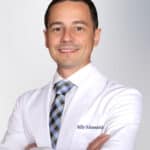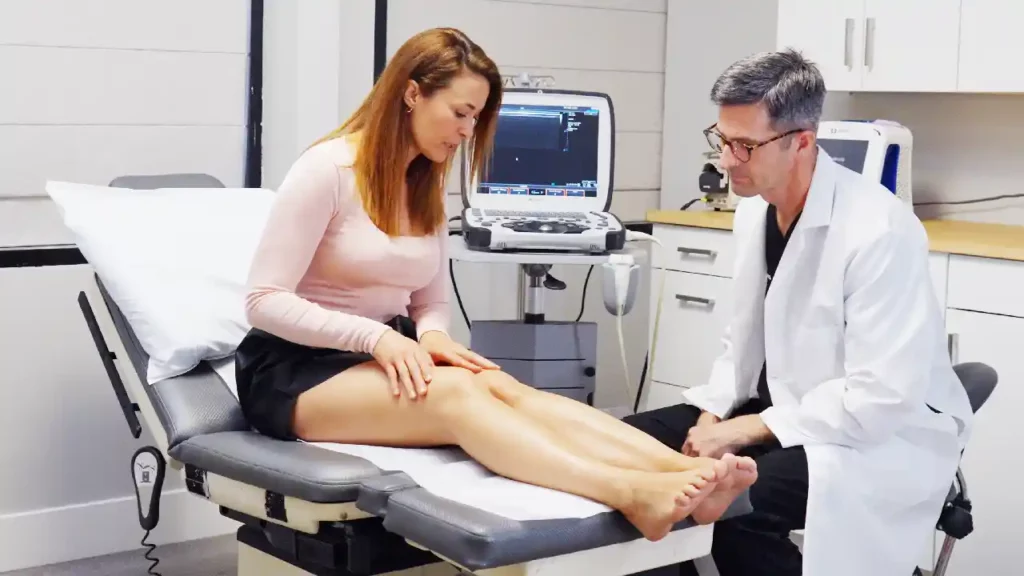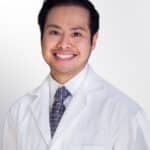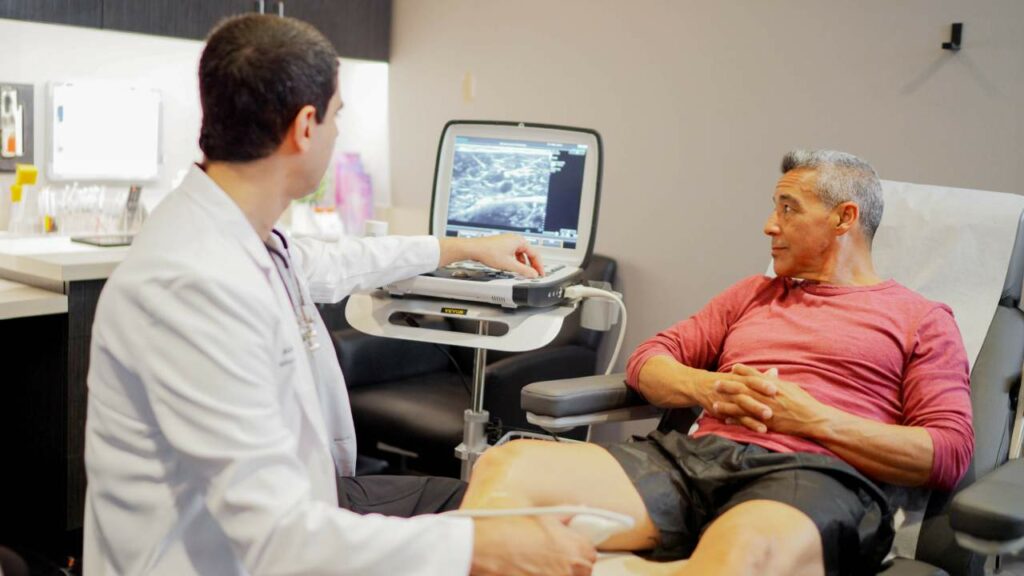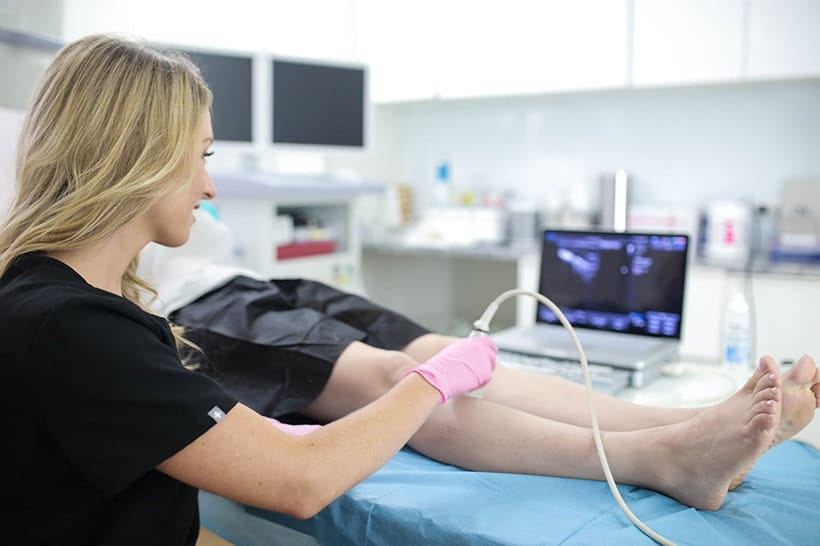Dr. Kindelan Explains What Causes Varicose Veins
Summary
Varicose veins are caused when the veins in your legs become weakened, often due to chronic venous insufficiency (CVI), where the valves inside the veins fail to function properly, causing blood to pool rather than flow back to the heart. However, various factors can increase the risk of developing varicose veins, including genetics, age, pregnancy, and certain lifestyle choices.
If you’ve noticed swollen, twisted veins on your legs or feet, you might wonder, “What causes varicose veins?” Varicose veins occur when veins become enlarged and weakened, making them visible beneath the skin. These veins are typically blue or purple and can sometimes be painful. While they are common and often a cosmetic concern, they can also lead to more serious symptoms if left untreated.
At Vein Centers CA, Dr. Joshua Kindelan is a trusted expert in diagnosing and treating varicose veins. With his background in cardiovascular and thoracic surgery, he uses advanced, minimally invasive vein treatments to help you regain comfort. Read on as Dr. Kindelan explains the causes of varicose veins and shares effective ways to minimize the risk of developing them.
What Causes Varicose Veins?
The main cause of varicose veins is chronic venous insufficiency (CVI). CVI occurs when the valves inside the veins, which regulate blood flow, become weakened or damaged. These valves prevent blood from flowing backward, but when they fail, blood begins to pool in the veins, causing them to stretch and become enlarged. This leads to varicose veins.
However, several factors can contribute to the development of CVI and varicose veins. These include genetic predisposition, hormonal changes, and lifestyle factors. Let’s explore some of these risk factors in more detail:
- Genetics and Family History: A major risk factor for varicose veins is family history. If one or both of your parents had varicose veins, you are more likely to develop them as well. Your genes influence the strength and functionality of your vein walls and valves, so if your parents had weak veins, you may have a similar genetic predisposition.
- Age: As you age, your veins naturally lose their elasticity. This can make it harder for them to return blood to the heart efficiently. Over time, the vein walls can weaken, and the valves may fail, leading to blood pooling in the veins. People over the age of 50 are more likely to develop varicose veins, although they can occur at any age.
- Pregnancy: Pregnancy brings about significant hormonal changes that can affect the veins. The growing uterus puts additional pressure on the veins in your legs, which can contribute to varicose veins. The increased blood volume during pregnancy can also cause veins to swell, and hormonal changes can affect the elasticity of the veins.
- Hormonal Changes: Hormonal changes, especially during pregnancy or menopause, can lead to varicose veins. Estrogen and progesterone hormones can relax the vein walls, making them more prone to valve failure. Hormonal shifts can also affect the structure of the vein valves, contributing to blood pooling in the legs.
- Obesity: Carrying excess weight puts additional pressure on your veins, making it harder for blood to flow upward toward your heart. Over time, this added strain can weaken the valves in your veins, leading to the development of varicose veins. Maintaining a healthy weight is crucial for reducing the risk of varicose veins.
- Prolonged Sitting or Standing: If your job or lifestyle involves sitting or standing for long periods, this can negatively affect your circulation and contribute to varicose veins. When you’re stationary for long periods, your blood doesn’t flow as efficiently, causing pressure to build up in the veins, especially in the legs.
- Smoking: Smoking damages your veins and impairs circulation. It reduces blood flow to the lower limbs and can make veins more susceptible to damage. Smoking also increases the risk of venous insufficiency, as it impairs the oxygen supply to the vein walls, making them more prone to weakening.
How to Prevent or Minimize the Risk of Varicose Veins?
While it may not be possible to completely prevent varicose veins, there are several steps you can take to minimize your risk and manage the condition early on. By improving circulation and maintaining a healthy lifestyle, you can reduce the likelihood of developing varicose veins or ease their progression.
Here are a few helpful tips to minimize the risk of varicose veins:
- Exercise regularly: Physical activity, especially walking, helps improve blood circulation. It also helps prevent weight gain, which can put strain on your veins. Aim for 30 minutes of moderate activity a few times a week.
- Elevate your legs: Elevating your legs can improve circulation and reduce swelling. Try to raise your legs above the level of your heart for 15 minutes a few times a day.
- Avoid long periods of sitting or standing: If your job requires sitting or standing for extended periods, take regular breaks to stretch or walk around. This will help reduce the pressure on your veins.
- Wear compression stockings: Compression stockings apply gentle pressure to your legs, improving circulation and preventing blood from pooling in the veins. These stockings can be especially helpful if you already have varicose veins or a family history of the condition.
- Maintain a healthy weight: Being overweight puts extra pressure on your veins. Maintaining a healthy weight will reduce strain on your veins and help prevent varicose veins from developing or worsening.
- Eat a healthy diet: Eating foods that promote healthy circulation, such as those rich in fiber, antioxidants, and omega-3 fatty acids, can support vein health. Avoid excessive salt intake to reduce swelling in the legs.
Why Consult Dr. Kindelan for Varicose Veins?
Dr. Joshua Kindelan is a board-certified vein specialist with a wealth of experience in cardiovascular and thoracic surgery. He completed his general surgery residency at the Bethesda Naval Hospital and later pursued a second residency in cardiovascular and thoracic surgery at Northwestern University Medical Center. After serving in the U.S. Navy, Dr. Kindelan honed his skills in treating complex venous conditions, including venous insufficiency.
At Vein Centers CA, Dr. Kindelan offers state-of-the-art, minimally invasive varicose vein treatments to help you regain comfort and improve your appearance. Whether you’re dealing with the pain of varicose veins or simply want to enhance the appearance of your legs, Dr. Kindelan is equipped with the latest techniques for optimal results.
If you’re in San Diego, visit our location at 5330 Carroll Canyon Rd No. 140 or check out other California locations to learn about our vein treatments. Our treatments are often covered by most medical insurance plans, and our team can help you verify your insurance details. Contact us to schedule a consultation and explore your vein treatment options.
